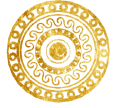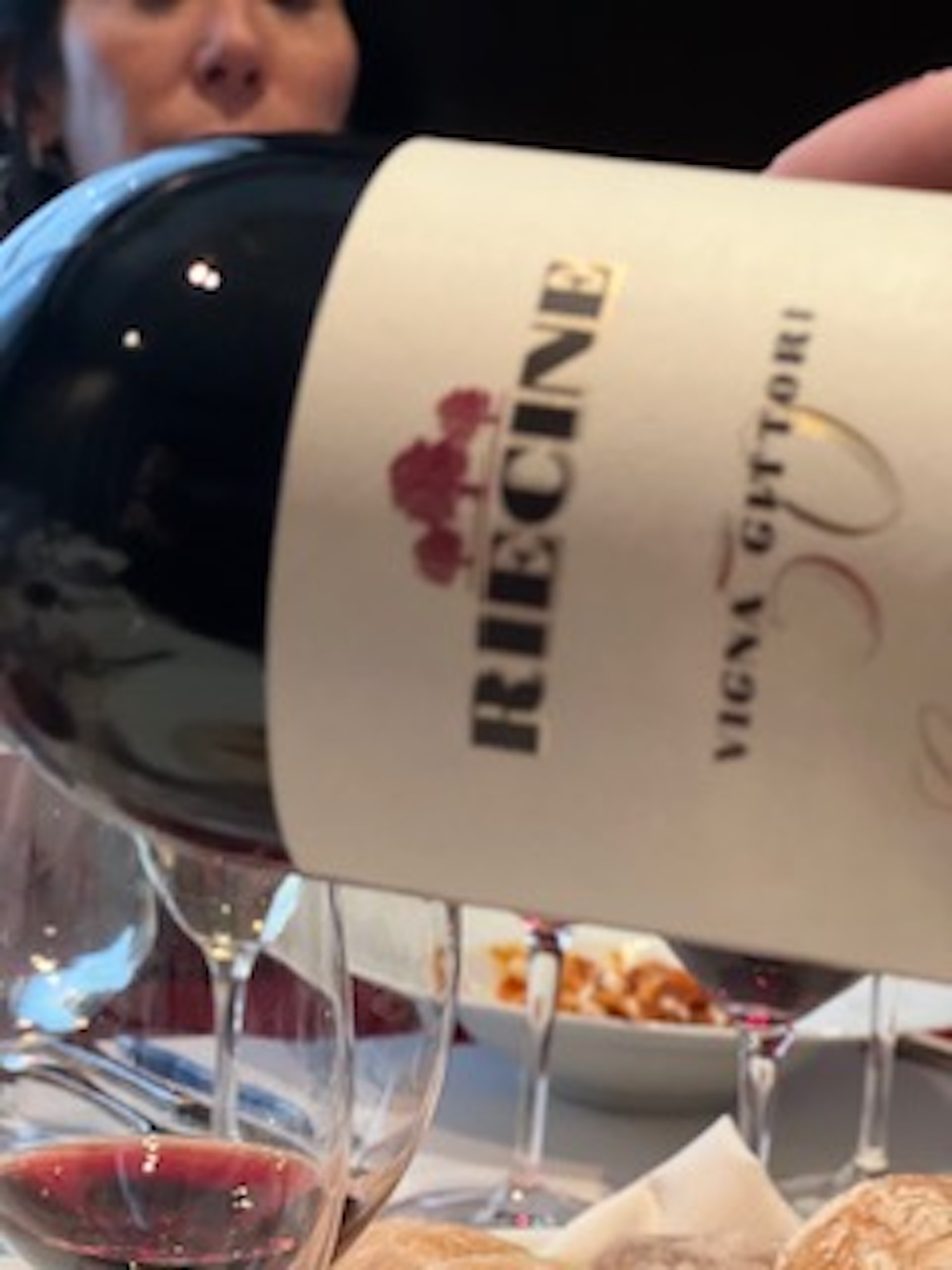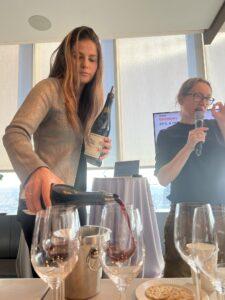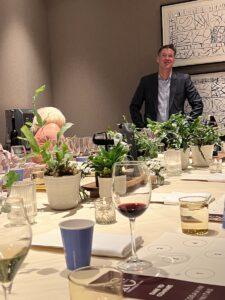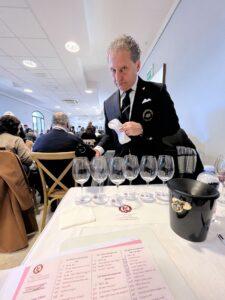Chianti Classico Gran Selezione Wine lLnch
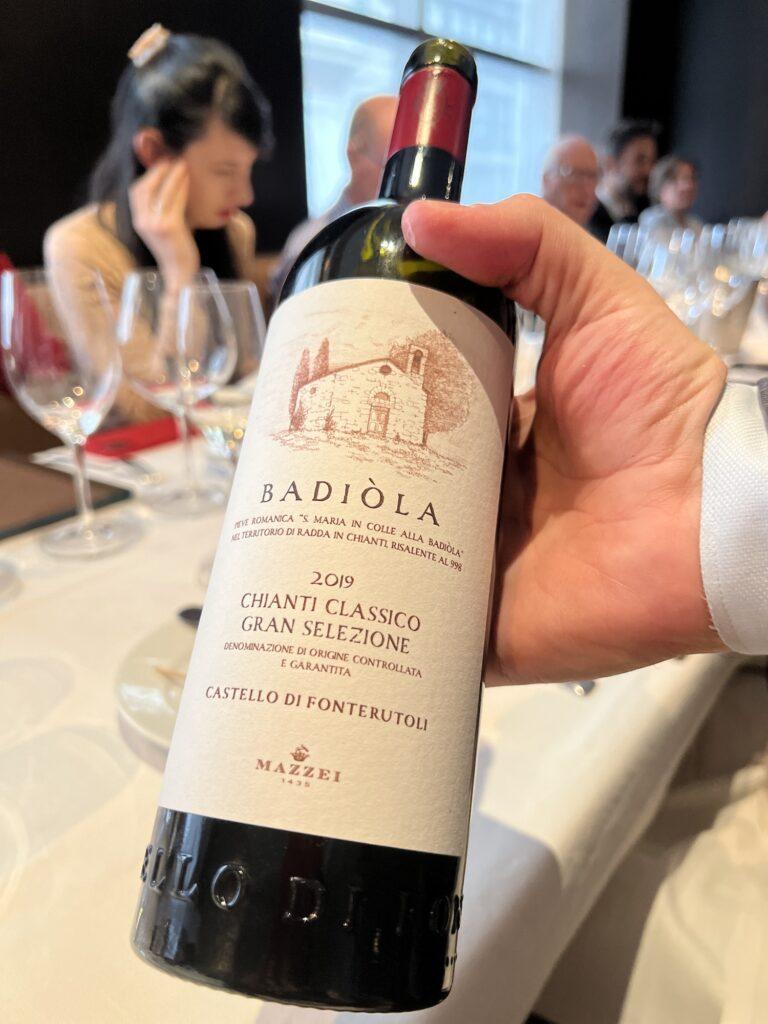
What is it about the Sangiovese grape that renders it one of the most popular grape varieties in the world?
Sangiovese is a chameleon, charming both its rustic youth and the sophistication it gains through years of bottle age.
For centuries, history shows us that many of the finest examples of Sangiovese come from the Chianti Classico DOCG region in Tuscany.
Today Giovanni Manetti, President of the Chianti Classico Consortium
Today Giovanni Manetti, President of the Chianti Classico Consortium, visited New York to explain the exciting new developments going on in the Chianti Classico region of Tuscany.
Unità Geografica Aggiuntiva
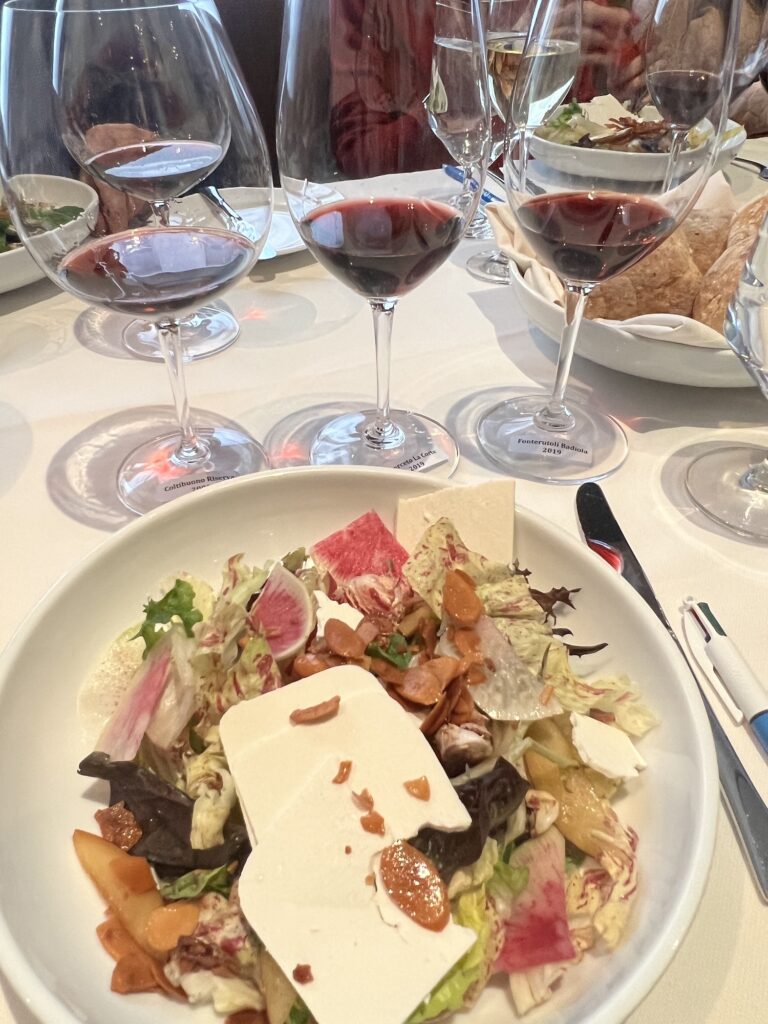
Of immediate interest was the introduction of the village system “UGAs” (Unità Geografica Aggiuntiva) in 2021. A UGA is a place of origin within a DOC/G which can be added to the name of a wine to showcase its specific terroir … in a way like other classic regions such as Burgundy.
Soon you will see the specific village on Chianti Classico bottles.
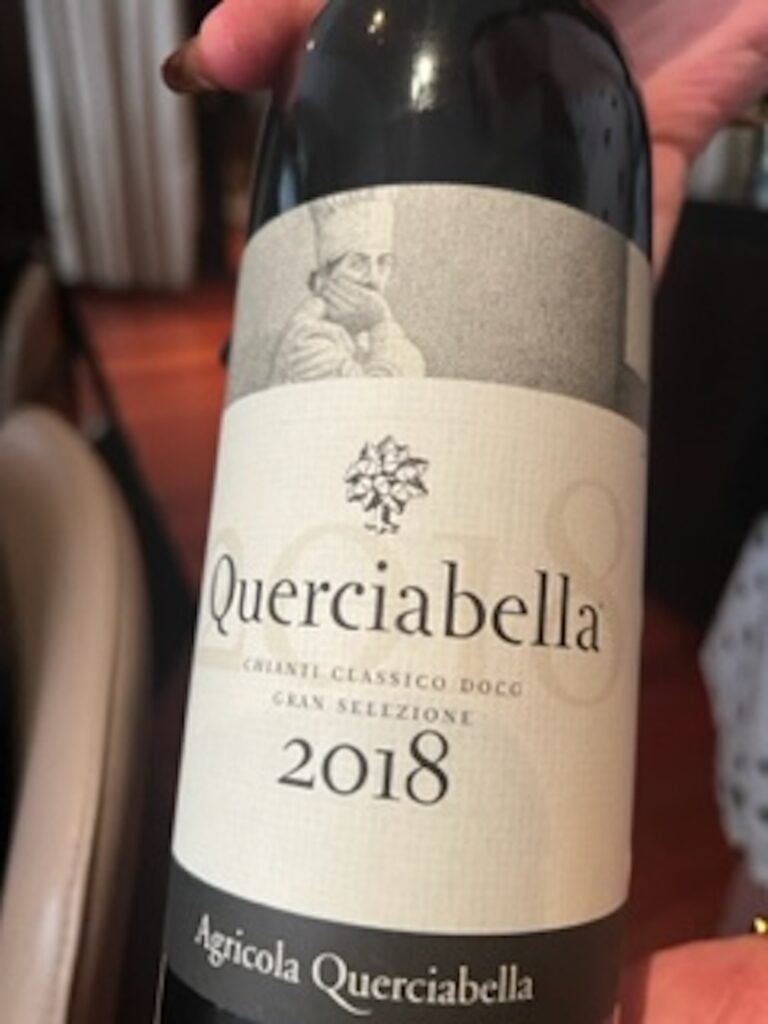
Related to this was news that the producers in these specific UGA subzones are working together to form their own individual consortium-like groups, with the common goal of showcasing their individual terroir.
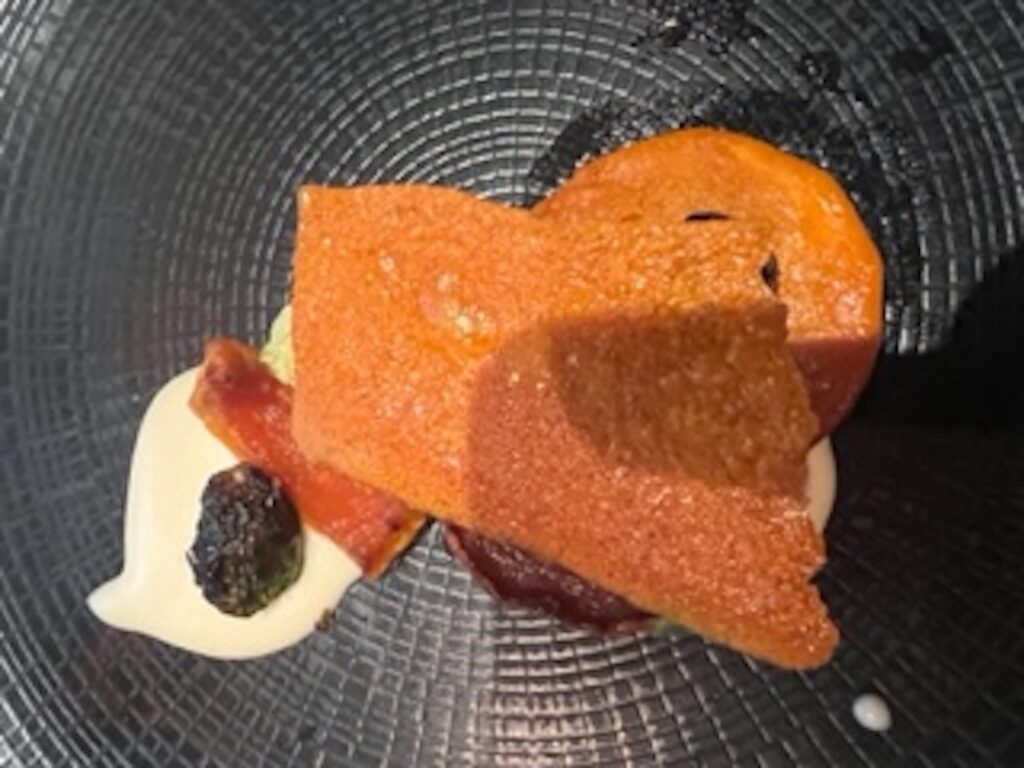
Less official news focused on Mr. Manetti’s observations during the big tasting events (VinItaly, ProWein) and international consumer events where the questions consumers asked of him have changed.
In the past, as an example, a consumer might have tasted a glass of Chianti Classico and asked “how long did this spend in barrel?”
Now the question has changed to more terroir-specific questions such as “what is the elevation of the vineyard” and “what is the soil?”
To Mr. Manetti, these are positive questions which showcase the evolution of the wine customer, especially those interested in Chianti Classico wines and open to learning more about how the terroir distinguishes it from other regions within Italy.
Consumer Questions: Becoming More Terroir Driven
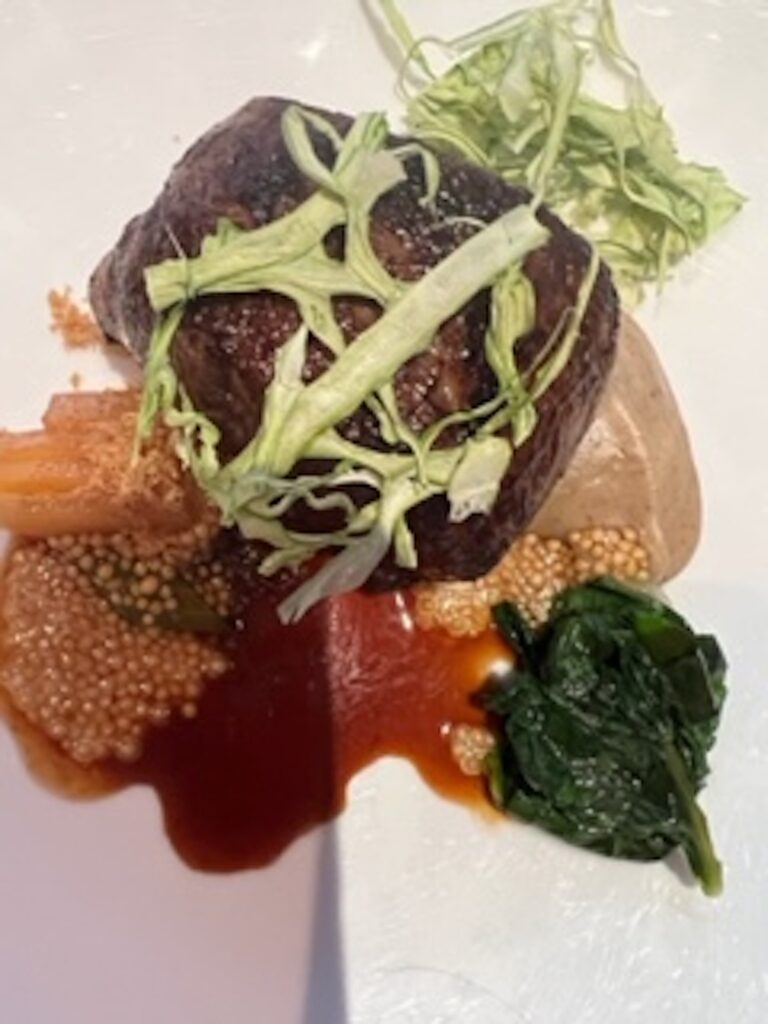
Less official news focused on Mr. Manetti’s observations during the big tasting events (VinItaly, ProWein) and international consumer events where the questions consumers asked of him have changed.
In the past, as an example, a consumer might have tasted a glass of Chianti Classico and asked “how long did this spend in barrel?”
Now the question has changed to more terroir-specific questions such as “what is the elevation of the vineyard” and “what is the soil?”
To Mr. Manetti, these are positive questions which showcase the evolution of the wine customer, especially those interested in Chianti Classico wines and open to learning more about how the terroir distinguishes it from other regions within Italy.
Reflection of Terroir within the Glass
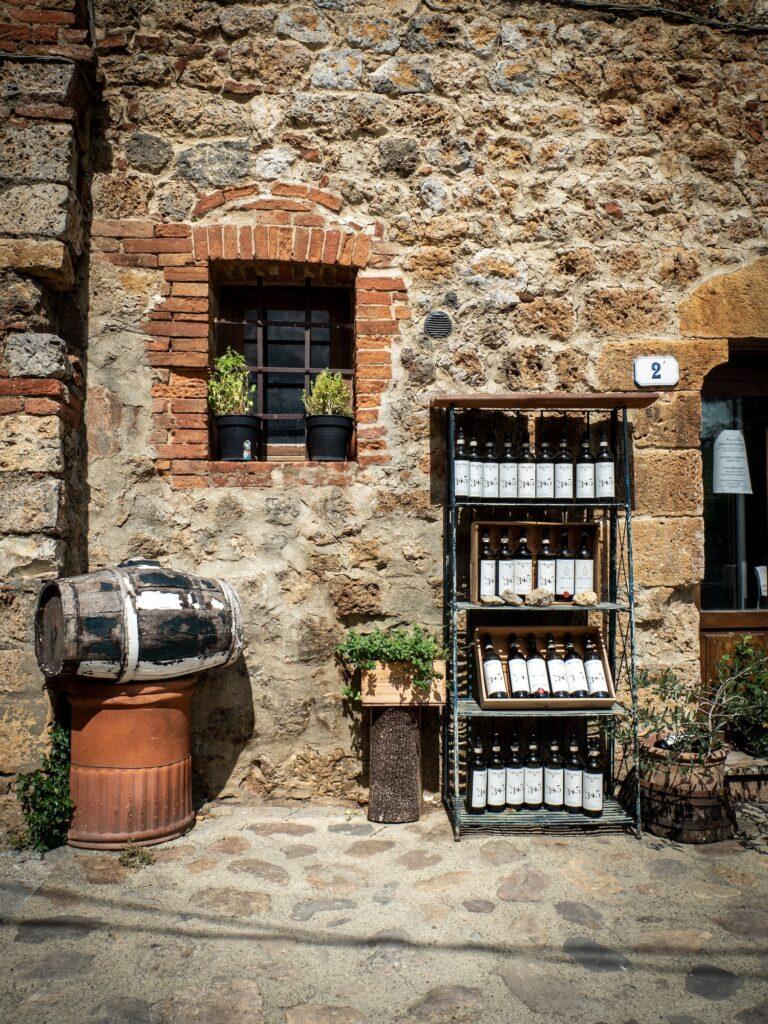
My own interpretation of the well-balanced wines I tasted, and the new village labeling to appear on the bottles, is that this region is taking a thrilling new step in its evolution.
Gran Selezione - Now Must be 90% Sangioverse
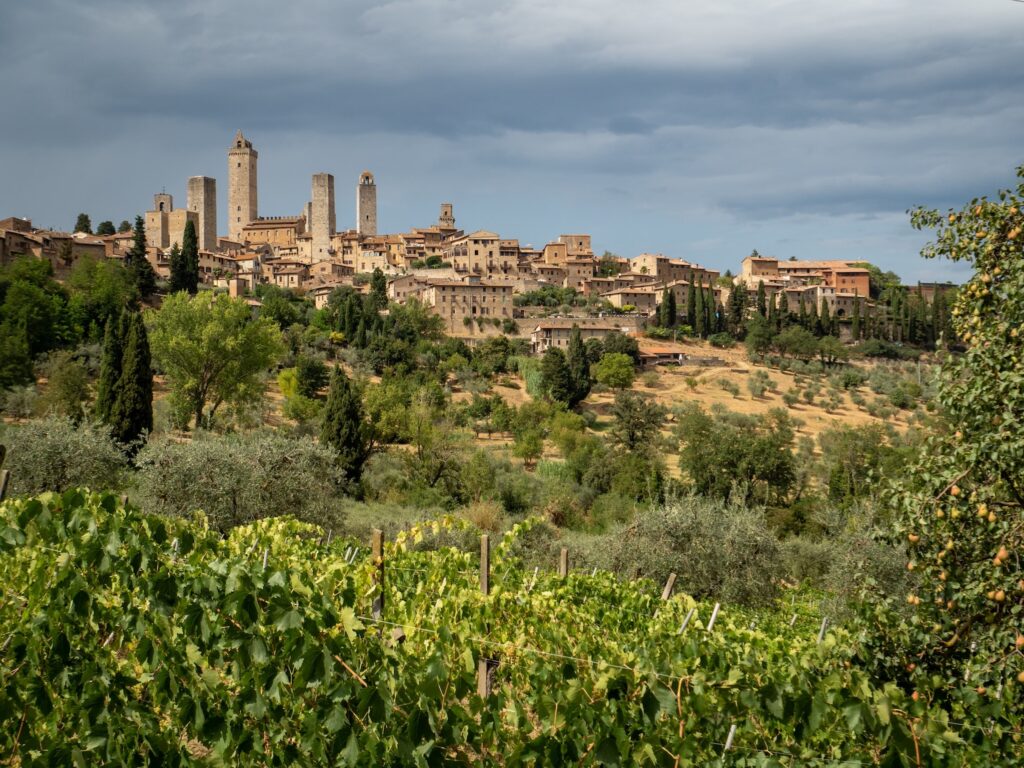
Gran Selezione, the very top of the pyramid of Chianti Classico wines, must now have at least 90% of the blend Sangiovese. Blending partners can be the typical native varieties such as Canaiolo, Colorino and Malvasia Nera.
This new change (previously the rule was 80% Sangiovese) is positive, reinforcing the Sangiovese flavors, aroma, and mouthfeel and minimizing any impact from domineering international varieties (Cabernet Sauvignon or Syrah).
The Wines
Few people outside Tuscany could have had access to the rare, fine wines presented at the lunch.
Though it was not a technical tasting, where one could take copious notes and directly compare a Riserva, for example, to a Gran Selezione, one could easily see the broad strokes of quality region throughout the wines:
When mentally tasting each wine for the “must have qualities” of Finesse, Length of Finish, Intensity of Flavor, Balance between acidity and fruit, Concentration, Complexity, Ability to Age, and “Typicity” of the region all passed with flying colors – the bar for excellence superseded.
Of the below wines, I enjoyed them all, but the 1988 Castello di Monsanto Chianti Classico Riserva Il Poggio, was truly a beauty.
Though I’ve been fortunate enough to taste a good deal of fine aged wines as a journalist and wine scholar, this particular wine had such a vibrant color and fresh acidity it was hard to believe it was over thirty years of age.
I also adored the Querciabella Chianti Classico Gran Selezione, 2018, appreciating its fine balance between strident acidity and rich fruit.
As for the other wines, what differentiated them was the percentage of Sangiovese (many had 100%) and if they were from a single vineyard, or (as allowed) simply a blend of Sangiovese grapes from the very best vineyards.
Many thanks to Giovanni Manetti, President of the Chianti Classico Consortium, for this excellent presentation.
Also the NYC restaurant Al Fiori did an excellent job of pairing the wine with great food.
Castello di Monsanto Chianti Classico Riserva Il Poggio, 1988
Castello di Ama Chianti Classico Riserva San Lorenzo, 1990
Felsina Chianti Classico Riserva Rancia, 1995
Badia a Coltibuono Chianti Classico Riserva, 2006
Le Cinciole Chianti Classico Gran Selezione Aluigi, 2018
Dievole Chianti Classico Gran Selezione Vigna di Sessina, 2018
Querciabella Chianti Classico Gran Selezione, 2018
Fontodi Chianti Classico Gran Selezione Terrazze San Leolino, 2019
Riecine Chianti Classico Gran Selezione Vigna Gittori, 2019
Ricasoli Chianti Classico Gran Selezione Ceniprimo, 2019
Mazzei Chianti Classico Gran Selezione Badiola, 2019
Querceto Chianti Classico Gran Selezione La Corte, 2019
Rocca di Montegrossi Vin Santo del Chianti Classico 2011
